First-Year Food Adventures
Lanie Lee Cheatham ’24
I love to make food. It is an outlet for me, a way to relieve stress, to craft something beautiful, to tell stories, and to enjoy something with the people you care about. So, coming to college I was worried. The stereotype for college dorms is that the kitchens are not the most stellar nor pristine. From the various Oberlin blogs I looked at, it seemed that Oberlin would be no different. I chose Oberlin in part because of OSCA, which stands for Oberlin Student Cooperative Association. This is an association run by students, for students who work cooperatively to live, dine, and discuss with each other. Due to the pandemic and some quite frustrating college policies, the co-ops were closed for the Fall 2020 to Spring 2021 school year. Still, I knew that I would want to be cooking, so I brought several cooking appliances and apparatuses with me on my first move-in day last fall.
If you plan on cooking or baking in college, some essentials I would recommend are pan/pot (or saucier, my friend Leela spent hours researching what sort of cooking vehicle to purchase and settled on a saucier, large enough to boil pasta in but wide enough to cook scrambled eggs), silicone spatula (a must for baking!), bowls (for mixing various ingredients), and sheet pan (for cookies and roasting veggies). Or, join a co-op! Then you can make tasty food for your friends and utilize a kitchen and its tools.
The oven in Dascomb, where I lived my first year, is password protected and extremely loud, with an industrial fan meant to prevent the smoke alarm from going off. It was a pain to cart all my supplies and ingredients back and forth from my room to the kitchen but was ultimately worth it to have some respite from dining hall food. I made so much in the Dascomb kitchen, and below I will share pictures and details!
Bread
I got into the sourdough baking craze during quarantine when I had nothing to do, and thought about continuing my ventures at Oberlin, but decided against bringing my starter on my cross-country road trip. Once I got to Oberlin, though, I regretted not bringing it. So I decided to make another starter. Armed with a cheap scale I ordered online, flour, water, and a jar I got at the local hardware store, I set off to grow some natural yeasts. It was a success, and I began baking various breads. Throughout my time here, I have made many types of sourdough bread: classic (with a mixture of bread, rye, and spelt flours), beet (!!), dark chocolate and cherry, and steel-cut oats and honey. Baking bread is a very intimate process that requires patience and determination. It is difficult to do in a dorm room, where the only counter space I have is the surface of my sheet pan which I set on the ground, but it is definitely worth it to me. Each loaf would take multiple days to prepare the starter, hand mix, let ferment, and bake. The sheer length of the experience made it even more rewarding to bite into a chewy crusty slice.
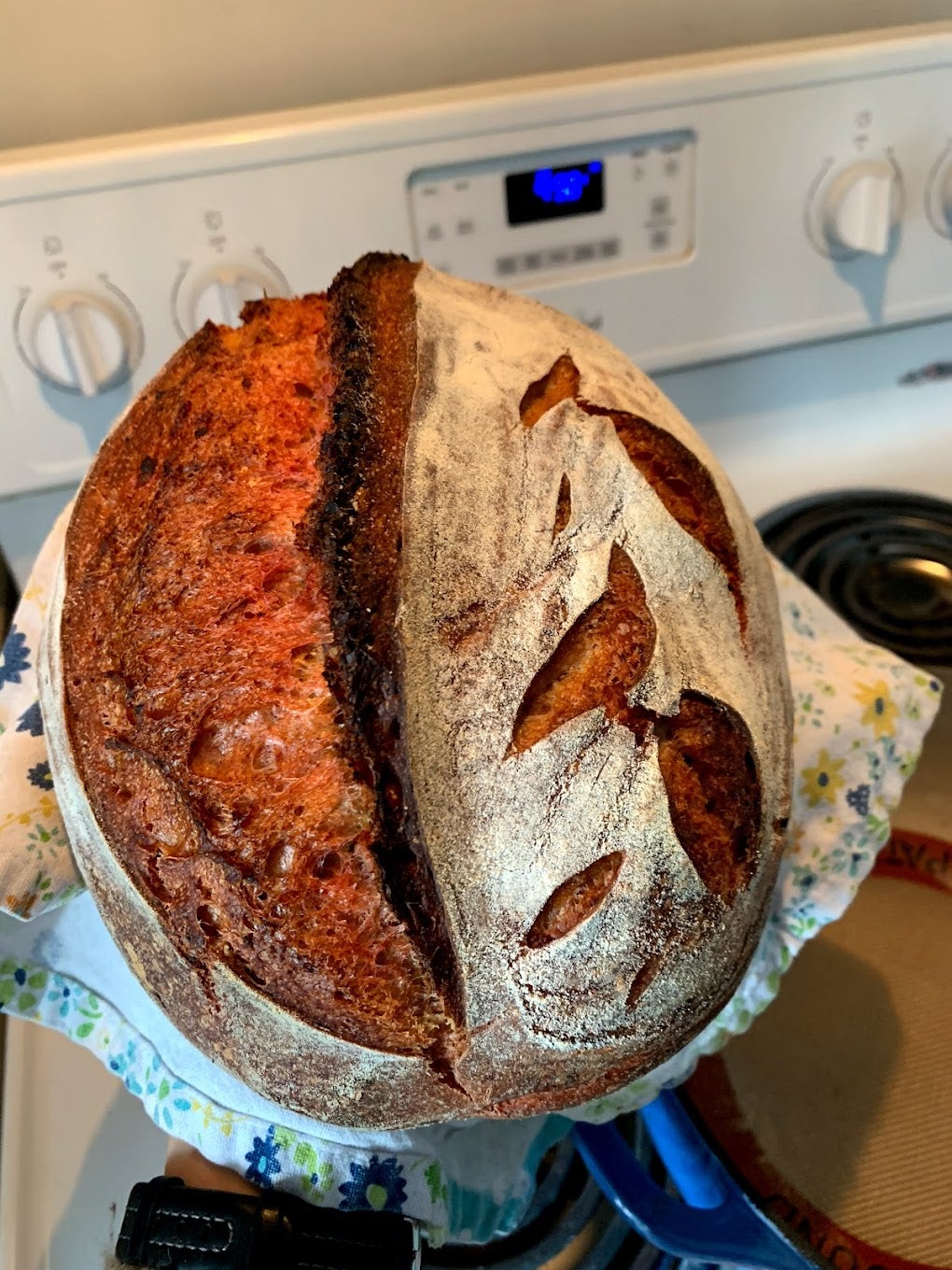
Soup
My friends and I have made various soups, always containing veggies and always being very warming. Soup is a fantastic meal, and only requires one pot, which is great when you have limited kitchen apparatuses. Also, I am a firm believer in having carbs at every meal, so I also made cornbread. My friend Leela so kindly got me a cast-iron skillet for my birthday, which was put to great use with this brown butter cornbread.
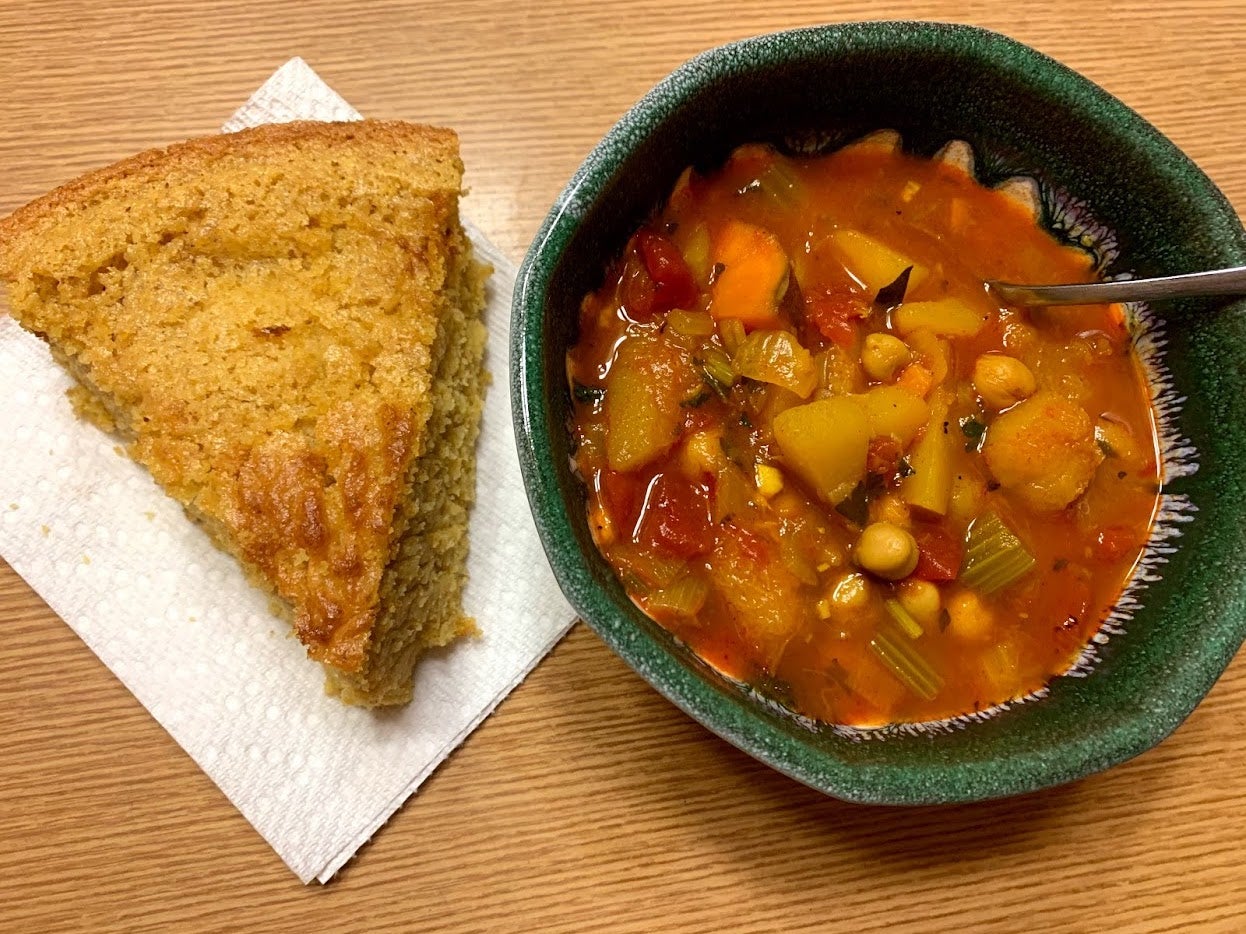
Yogurt and Granola
The Oberlin community is so amazing. There is a wonderful Facebook group called Oberlin “What Do You Have, What Do You Need?” that connects community members to each other to share things they are getting rid of and what they need. Through this, I was able to acquire two yogurt makers. You may be asking yourself. What is a yogurt maker? Well, I too was confused at first. Yogurt is made by heating up milk, letting it cool a bit, adding live cultures (typically by adding yogurt starter or just plain yogurt from the store), and letting it incubate for several hours. The yogurt makers I got from the Oberlin community had individual lidded glass crocks that you ladled milk into and put into the nested warmer overnight. Once you wake up, you take out the crocks and put them in the fridge, and that's it! Then you have thick yogurt to enjoy before/during zoom classes. I don't have a picture of the yogurt maker itself, so instead enjoy this photo of the granola I made. Fun fact: the fire alarm in Dascomb went off while I was making this (luckily not because of the granola, it was just a drill), so I had to pause the process for a few minutes.
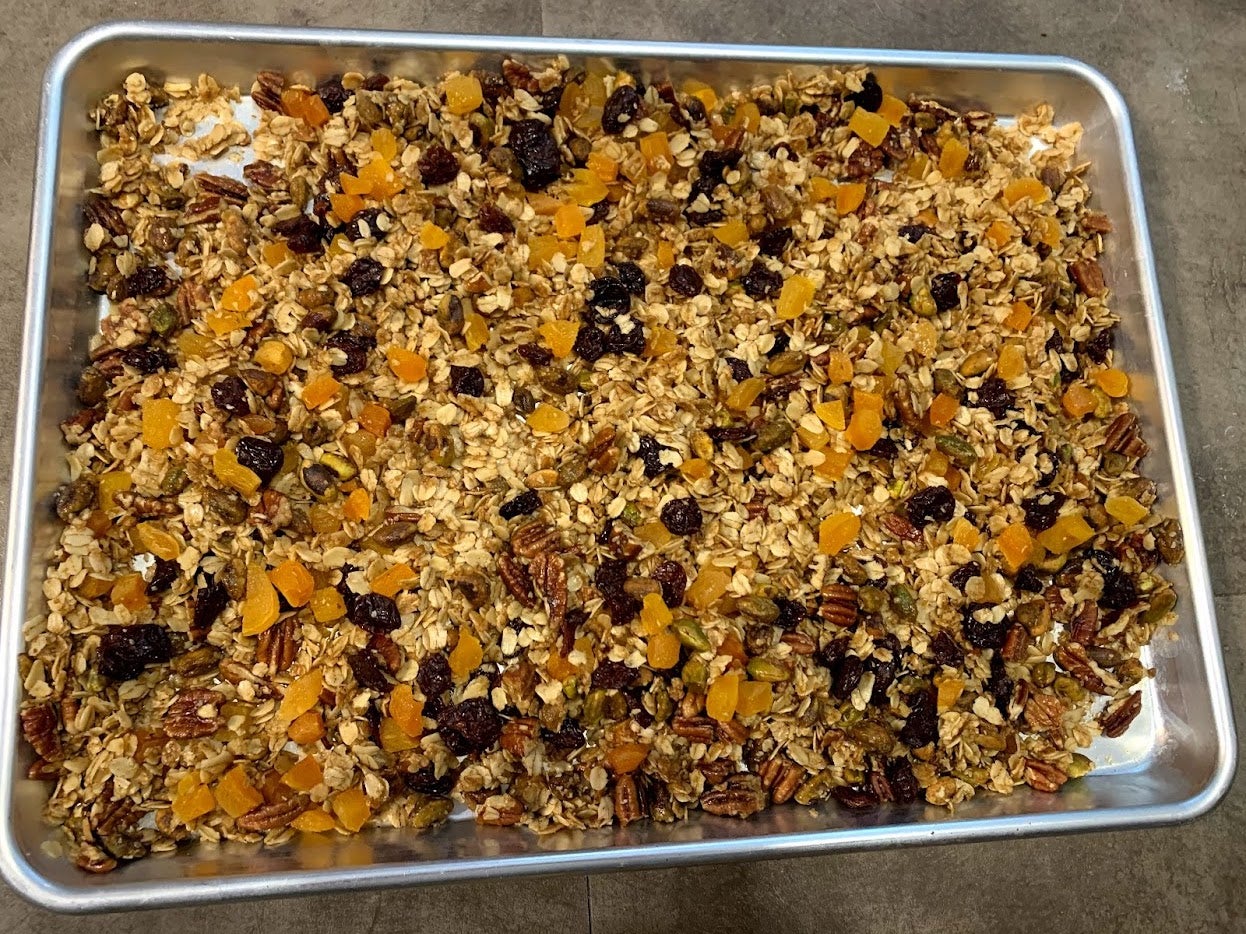
Japchae and Tofu
This may have been my crowning savory glory. How I managed to pull this off I am unsure, but we did end up eating around 9:30 pm, so I didn't exactly have the right timing. I brought 2 jars of homemade kimchi (covered in paper towels and double bagged, to ensure no spillage would occur) from my house to Oberlin in my checked baggage, and I wanted to make something to eat it with. My friend Evie had wanted to try Japchae, Korean sweet potato sesame noodles with vegetables (and traditionally steak too). I went to Kim’s Grocery and Carryout, a local market that sells various Asian grocery items—a staggering array of items for being located in rural Ohio—and also has delicious food, to get the sweet potato noodles. Equipped with supplies and committed to the project, I cooked up a lot of noodles and other ingredients for a delicious Valentine's Day dinner.
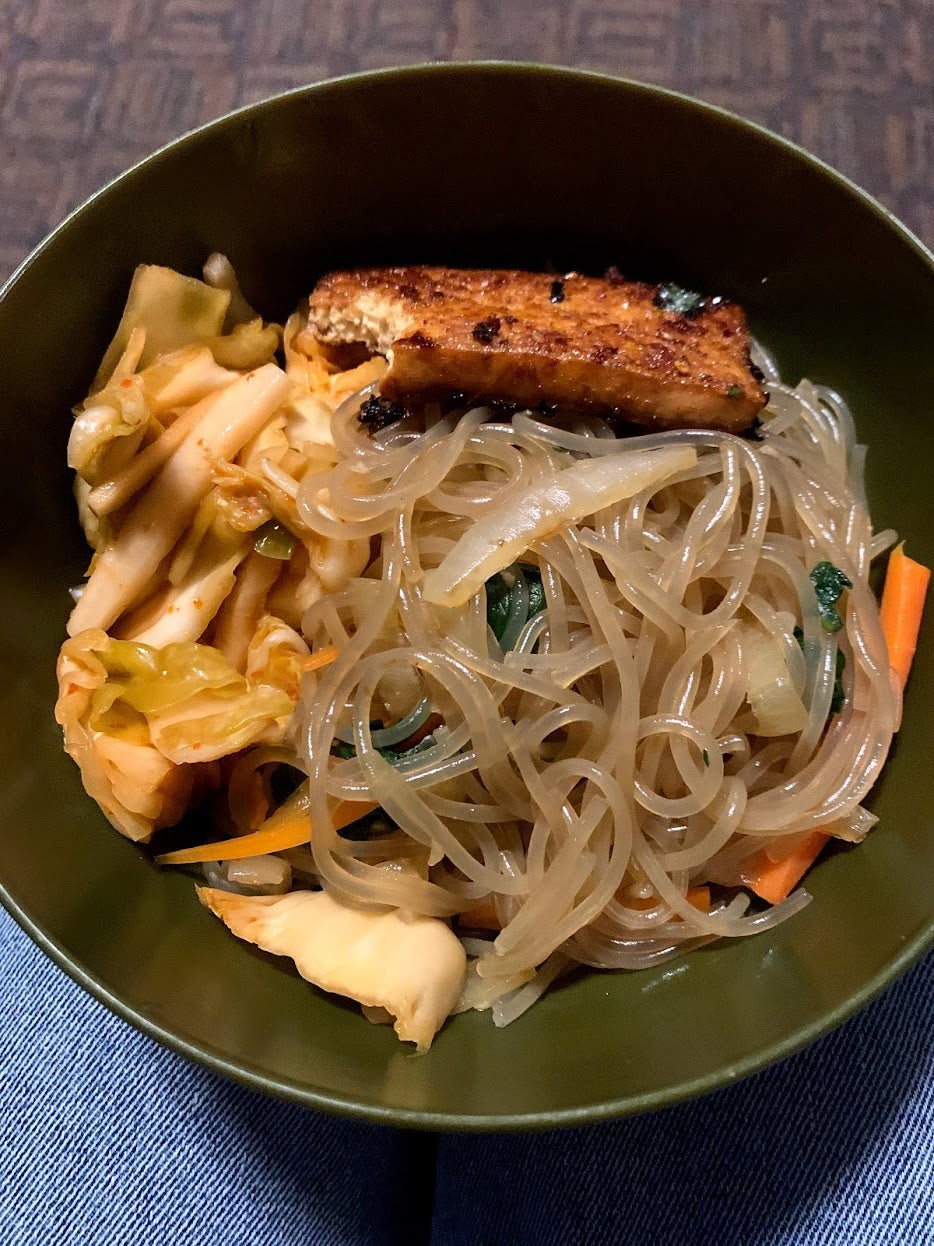
Carrot Cinnamon Rolls
Cinnamon rolls hold a special place in my heart. Every fall, winter, and whenever we are craving cinnamon, my family would make cinnamon rolls. Ours involved a two-day process, the first of rising and rolling, the second of baking and icing. I love carrot cake and wanted to try to make a cinnamon roll version of carrot cake by adding carrots to the main dough. It took me so long to grate the carrots since I only had a tiny fine grater, so I face-timed my mom while grating to pass the time and check-in! These rolls were beautiful, I rolled the dough out on my large sheet pan then spread the cinnamon, ginger, nutmeg, clove, allspice, butter mixture onto the dough, rolled it up, and sliced it. The carrots made the dough extra supple from the added moisture for a delectably soft roll. Topped with cream cheese icing and pecans, this was a tasty treat during my morning Zoom classes.
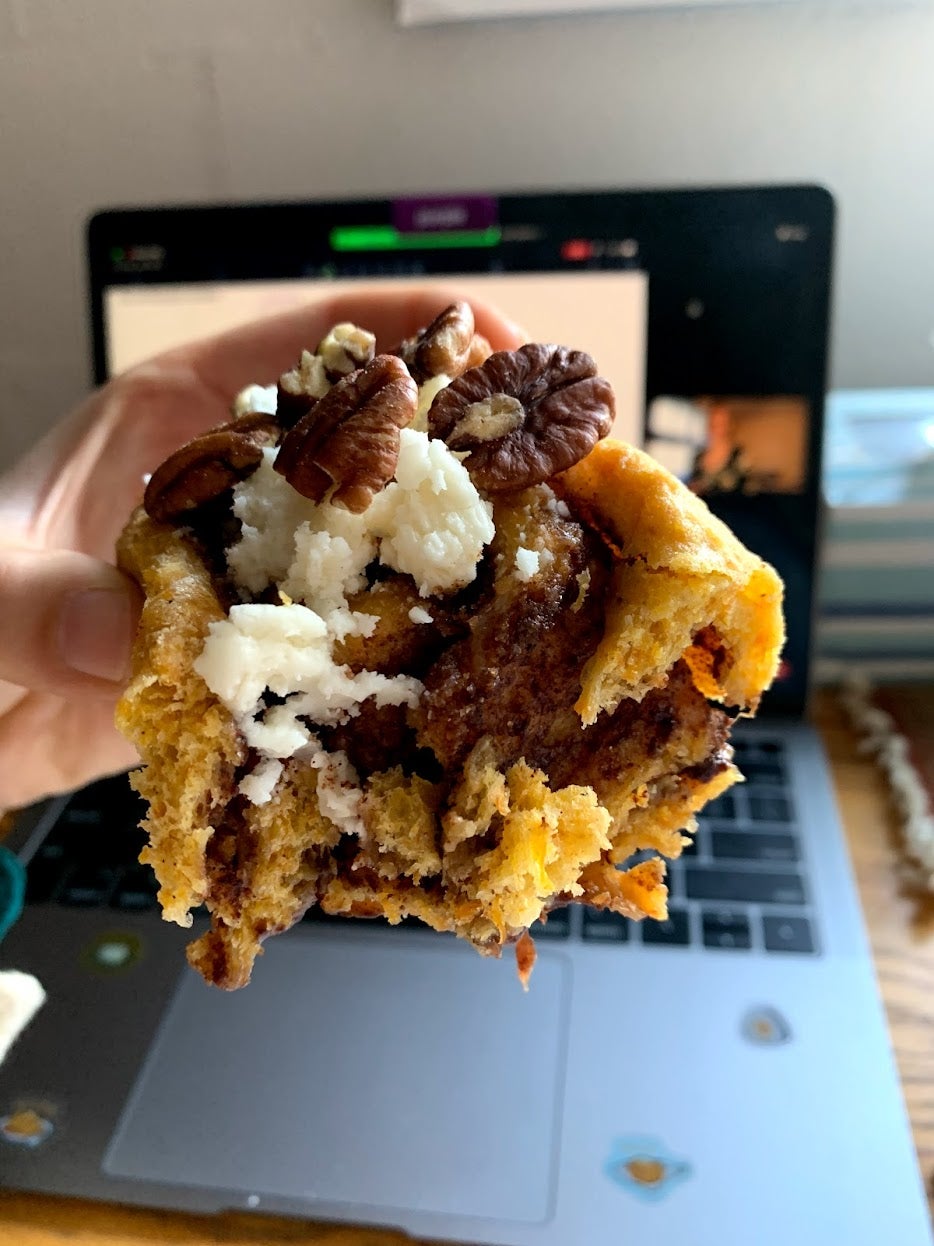
Caramel Apple Dutch Baby
This was one of the last things I made during my first year at Oberlin. Once I received the cast iron skillet as a gift, I knew that I had to make a dutch baby. A dutch baby is essentially a very puffy baked pancake, shaped like a crater. I took some apples from Stevenson dining hall, eggs and milk from DeCafe, and flour and other ingredients from IGA. I made caramelized apples and whipped cream to top the pancake. This baby was incredibly tasty, we did not have plates though so we all ate on various objects such as a pot lid, cutting board, and paper towels.
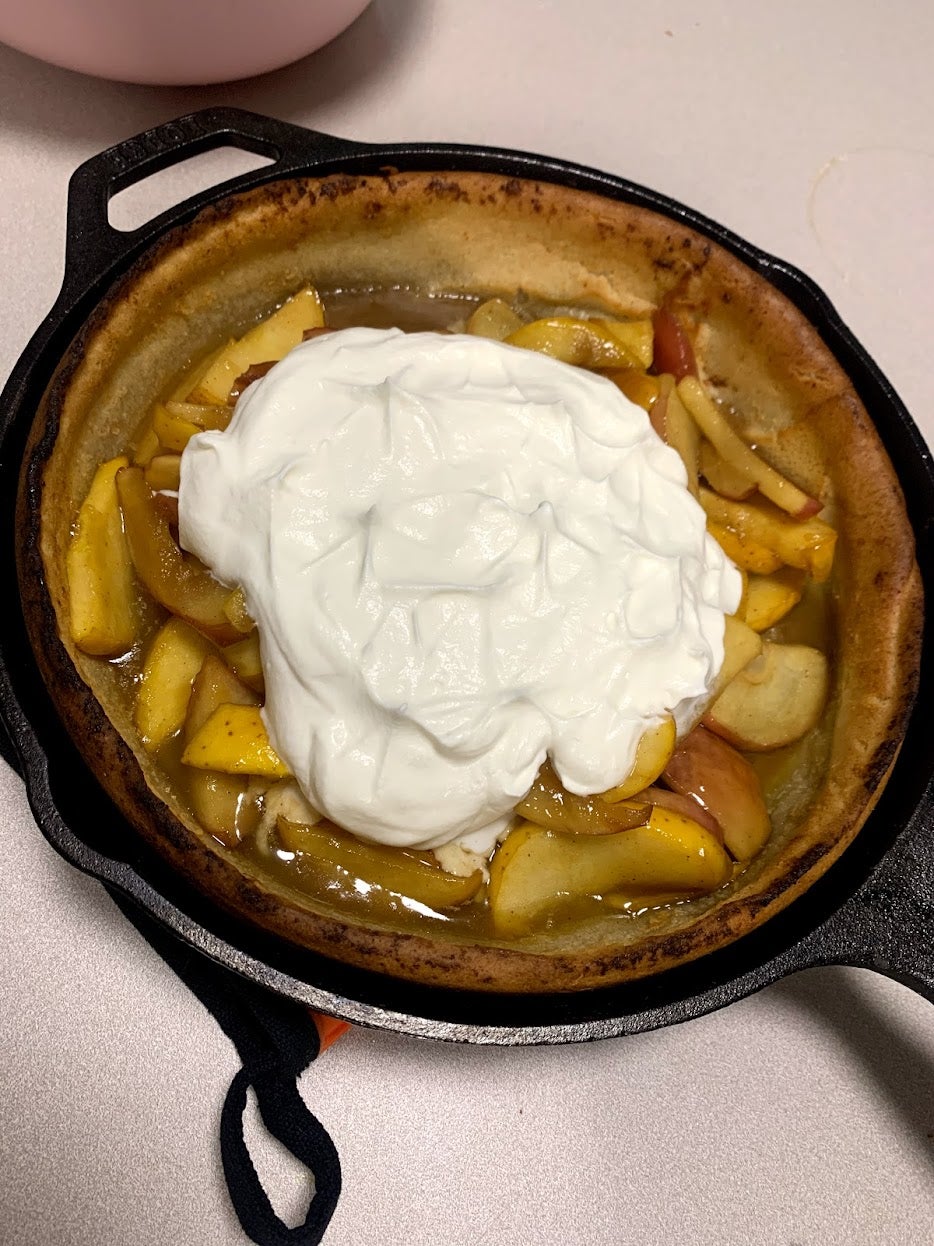
So, there you have it. A look into what I made in my dorm room and associated kitchen. The moral of this post is that dorm cooking is weird and difficult, but also fun! But if you really love cooking, baking, and/or eating and want to get better at it, join a co-op!
Tags:
Similar Blog Entries
Dining Without the Dining Halls
On living in village housing and being on a reduced meal plan.

Iron Chef
Everyone needs a little excitement and a sprinkle of stress sometimes, and for me, the OSCA Iron Chef competition was my perfect opportunity.

